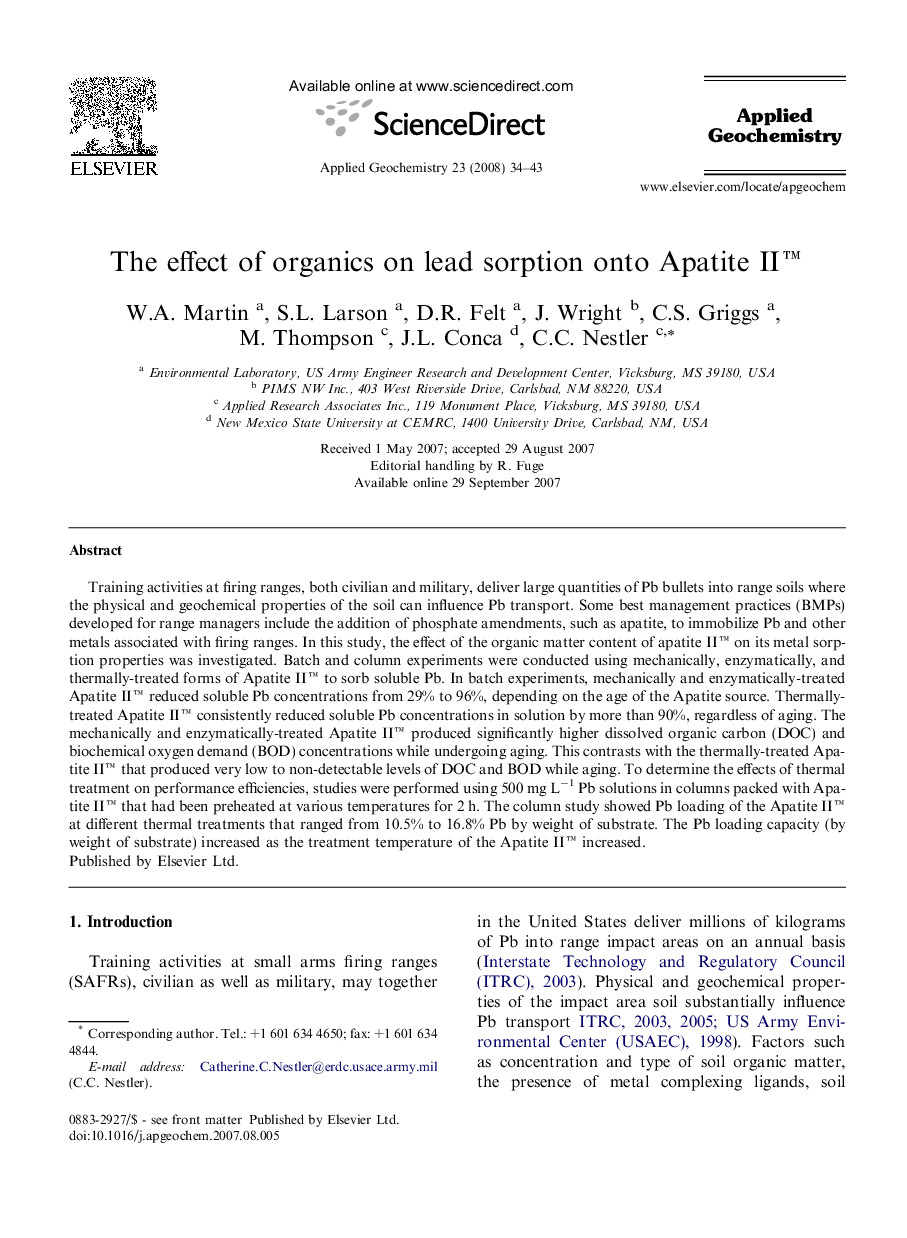| Article ID | Journal | Published Year | Pages | File Type |
|---|---|---|---|---|
| 4437484 | Applied Geochemistry | 2008 | 10 Pages |
Training activities at firing ranges, both civilian and military, deliver large quantities of Pb bullets into range soils where the physical and geochemical properties of the soil can influence Pb transport. Some best management practices (BMPs) developed for range managers include the addition of phosphate amendments, such as apatite, to immobilize Pb and other metals associated with firing ranges. In this study, the effect of the organic matter content of apatite II™ on its metal sorption properties was investigated. Batch and column experiments were conducted using mechanically, enzymatically, and thermally-treated forms of Apatite II™ to sorb soluble Pb. In batch experiments, mechanically and enzymatically-treated Apatite II™ reduced soluble Pb concentrations from 29% to 96%, depending on the age of the Apatite source. Thermally-treated Apatite II™ consistently reduced soluble Pb concentrations in solution by more than 90%, regardless of aging. The mechanically and enzymatically-treated Apatite II™ produced significantly higher dissolved organic carbon (DOC) and biochemical oxygen demand (BOD) concentrations while undergoing aging. This contrasts with the thermally-treated Apatite II™ that produced very low to non-detectable levels of DOC and BOD while aging. To determine the effects of thermal treatment on performance efficiencies, studies were performed using 500 mg L−1 Pb solutions in columns packed with Apatite II™ that had been preheated at various temperatures for 2 h. The column study showed Pb loading of the Apatite II™ at different thermal treatments that ranged from 10.5% to 16.8% Pb by weight of substrate. The Pb loading capacity (by weight of substrate) increased as the treatment temperature of the Apatite II™ increased.
